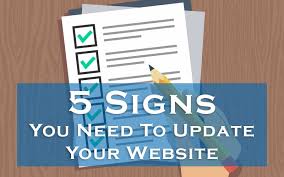
To fix a slow website, you first need to know how annoying it is for visitors; in fact, most people won’t wait around if your page takes too long to load. Fixing a slow website can be a real headache, and the truth is, if your website takes too long to load, people will leave before it even finishes opening.
Well, in this guide, I’ll walk you through simple, clear steps to fix a slow website, even if you’re not a web developer.
Why Your Website Is Slow
We all want our websites to look nice, but if they’re slow, they’re not helping our goals. Maybe you’ve added fancy images, plugins, or videos, and now your pages take forever to load. Well, I’m here to tell you that you don’t need to start over. You just need to make a few changes to fix a slow website and make it fast, smooth, and enjoyable to use.
Let’s start with the basics that will get your site running better in no time.
What Causes a Slow Website?
Before we talk about how to fix a slow website, let’s understand why it’s slow in the first place.
Some common reasons include:
- Too many large images or videos
- Poor-quality hosting
- Too many plugins or scripts are running in the background
- Outdated themes or WordPress versions
- Unoptimized code or website structure
Now let’s move on to how you can fix these problems step-by-step.

6 Easy Ways to Fix a Slow Website
Check Your Website Speed First
Before you fix anything, find out how slow your website really is and how you can speed up your website. Tools like Google PageSpeed Insights, GTmetrix Pingdom Tools can show you your site’s load time and what’s causing the delay. This will help you know where to focus.
Once you test your site, take note of the suggestions. These tools often point out the exact problems making your site slow.
Compress Large Images
One of the biggest reasons websites get slow is because of heavy images. If your photos are too large, they take forever to load. You can use free tools like TinyPNG, Image compressor, ShortPixel (for WordPress users.
These tools reduce the file size of your images without making them look bad. If you want to fix a slow website, start here; it makes a huge difference.
Use a Better Hosting Provider
Your web host plays a big role in your site’s speed. If your current host is slow or shared with too many users, it will affect your performance.
To fix a slow website, consider switching to a hosting company that’s known for speed and reliability. If you’re not sure where to start, companies like Albanny Technologies offer hosting services designed to keep your site fast and stable, even when traffic increases.
Limit the Number of Plugins
If you’re using WordPress, plugins can be helpful, but too many of them can slow down your site. Review your plugins and remove the ones you no longer need.
Keep only the essentials:
- Security plugin
- SEO plugin
- Backup plugin
- Caching plugin (more on this below)
This is an easy way to fix a slow website without touching any code.
Install a Caching Plugin
Caching stores parts of your website so it loads faster the next time someone visits. Think of it like saving a shortcut for your website on someone’s browser.
Popular caching plugins include W3 Total Cache, WP Super Cache and LiteSpeed Cache.
They help to fix a slow website by reducing the load time for repeat visitors.
Update Your Website Regularly
If your website runs on WordPress or another CMS (Content Management System), make sure everything is up to date.
Remember that regular updates help to improve performance and security at the same time.
You Can Fix a Slow Website
You don’t need to be a tech guru to fix a slow website. Just follow these simple steps:
- Test your speed
- Compress your images
- Get better hosting
- Remove unnecessary plugins
- Use caching
- Keep your website updated
In conclusion, speeding up your website improves your visitors’ experience and helps your site rank better on Google.
And remember, if all of this feels overwhelming or you just want expert help, companies like Albanny Technologies can help you set things up professionally so you don’t have to stress about it.
So don’t let a slow website turn visitors away. Make a few changes today, and you’ll start seeing results fast.














